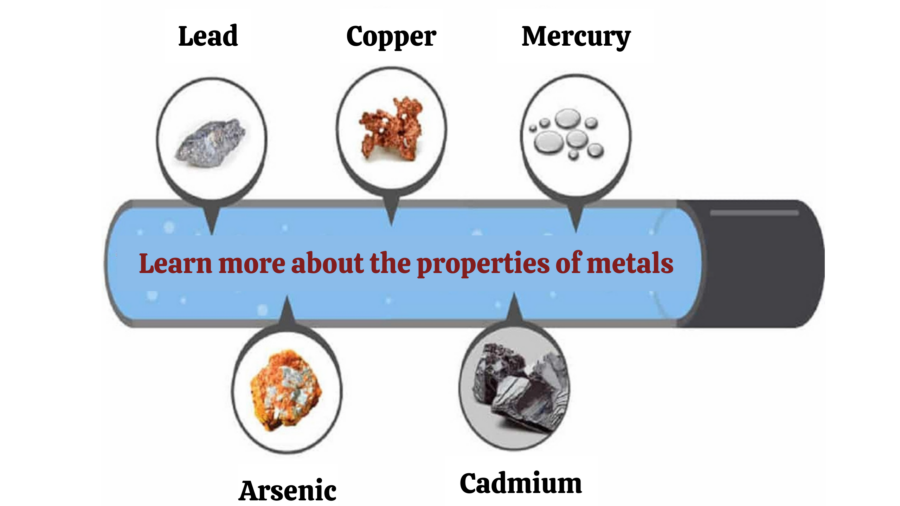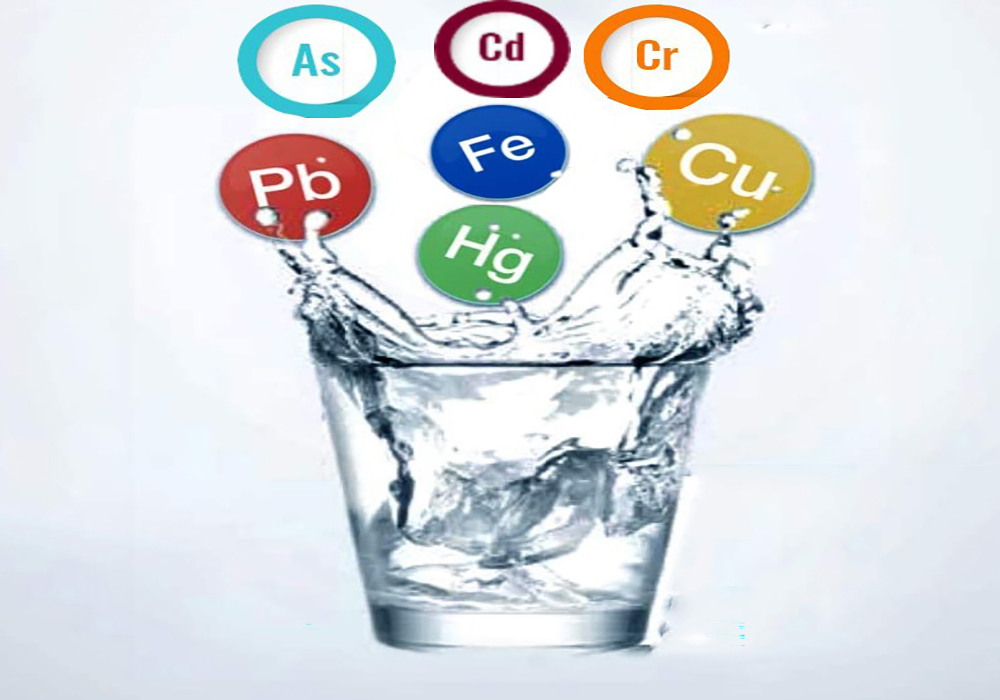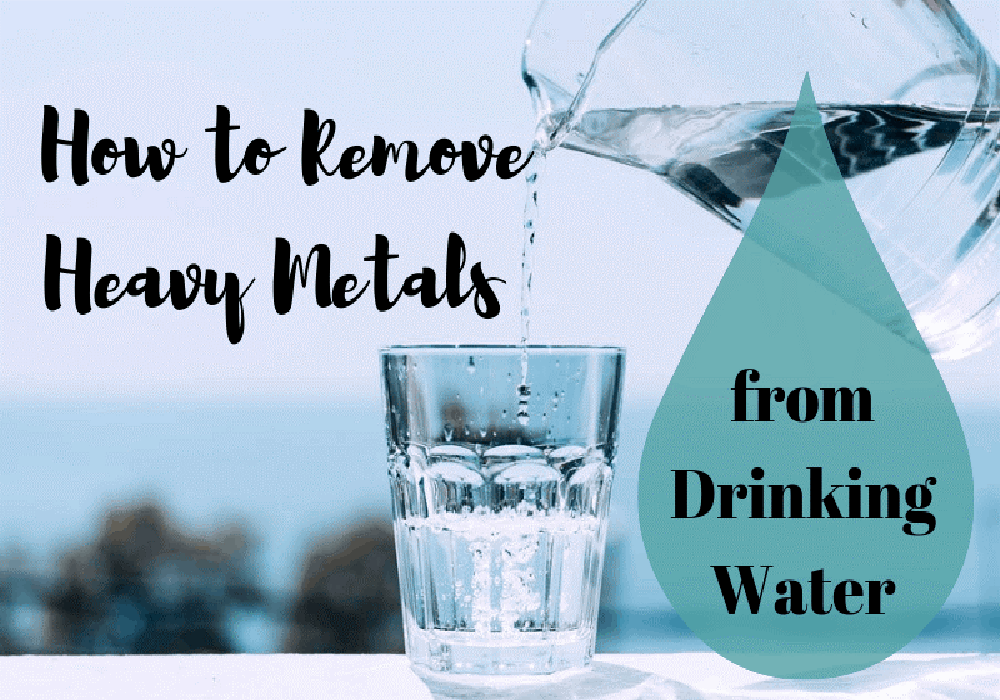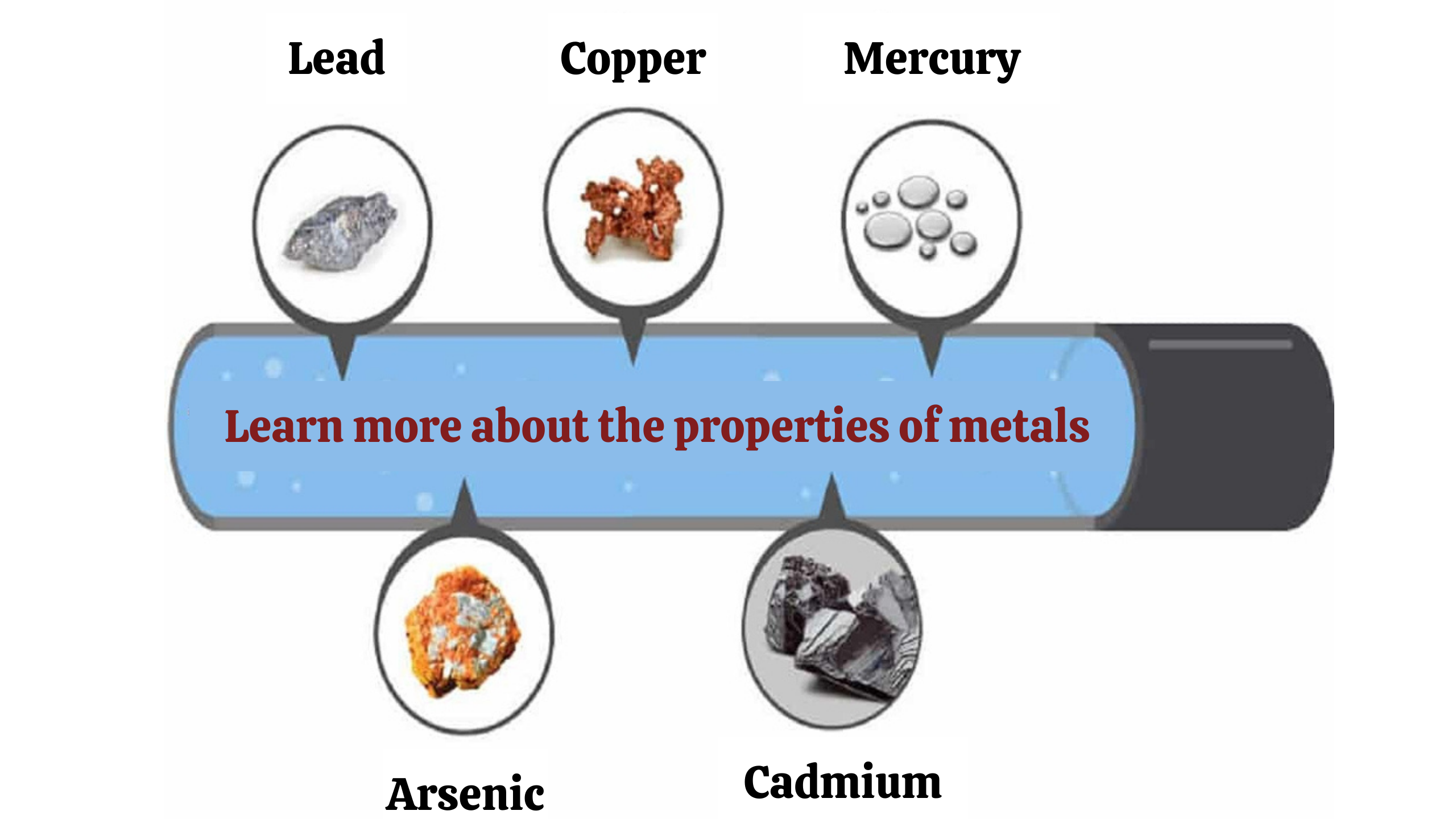Metals occur naturally in the environment, in our bodies, and even in the food we eat. Many of these metals are harmless – at least in small doses and with minimal exposure. But dangerous ones, especially heavy metals that are dense and found in the Earth’s crust, have been linked to a variety of health problems in children and adults, often through bioaccumulation.

Fortunately, there are a number of highly effective treatment methods that can filter toxic heavy metals out of your home’s water supply. But what exactly are heavy metals, and what does this mean for bioaccumulation? Furthermore, why is the bioaccumulation of heavy metals in the body a threat to your health, and how can you reduce your exposure to heavy metals in your drinking water?
What are heavy metals?
Heavy metals are a group of metallic elements that occur naturally in the Earth’s crust at relatively high concentrations, at least five times greater than water. While many naturally occurring elements are essential for life, some can be toxic or poisonous at low concentrations. Therefore, we should do our best to minimize exposure as much as possible.
Lead is one of the most talked about heavy metals in drinking water after the volcanic crisis. However, lead is not the only heavy metal found in drinking water. Other well-known heavy metals include arsenic, mercury, cadmium, chromium…
How do heavy metals get into drinking water?
Millions of Americans are exposed to heavy metals every day through their drinking water. EWG data shows that arsenic was detected in water utilities serving 108 million Americans from 2017 to 2019. During that same period, cadmium and inorganic mercury were found in utilities serving 7 million and 6.3 million people, respectively. Many other discoveries have been made (too many to list here), but this raises an important question: How did these elements get into drinking water in the first place?
Even if water starts out free of heavy metals at the source, it can become contaminated on its way to the tap. According to the EPA, household water and service lines, mining operations, oil refineries, electronics manufacturers, municipal waste disposal, cement plants, and natural mineral deposits can leach heavy metals into water as it travels to your home. Heavy metals can contaminate private wells through the movement of groundwater or seepage and runoff from surface water.
What is bioaccumulation?
Heavy metals pose a significant health risk because of their ability to bioaccumulate in our bodies. Bioaccumulation is the gradual buildup of chemicals – in this case metals – over time in living organisms. Essentially, organisms absorb chemicals faster than they can excrete them, or organisms are unable to completely metabolize (break down) the substances they ingest.
Heavy metals are distributed around the body through the blood as they enter the body. Depending on the nature of the metal, they can accumulate in specific body parts, such as tissues (e.g., nerve and fat tissue), bones, teeth, organs (e.g., kidneys, liver and brain), or substances produced in the body such as breast milk.
Once metals are absorbed, the body cannot metabolize or excrete them quickly enough. Fat tissue often contains the highest levels of toxic metals, which can then be passed on to the infant through breastfeeding.
Bioaccumulation of heavy metals in humans

We are all subject to bioaccumulation from consuming contaminated aquatic organisms or being exposed to heavy metals in food, air or drinking water. In addition to bioaccumulation, heavy metals can persist in our bodies for a long time without being broken down.
The 2014 lead contamination incident in Flint, Michigan, is a prime example of the health threat posed by the bioaccumulation of heavy metals. The crisis occurred after the city switched its main water source to the Flint River. Unfortunately, the water treatment system was ill-equipped to handle the highly corrosive water supply. Flint River water was so corrosive that it caused leaks from the city’s outdated lead pipes into the water supply after it passed through the treatment facilities.
Lead contaminated the local drinking water supply, exposing tens of thousands of Flint residents to dangerous levels. Over time, people began to ingest the metal through drinking water and other means, causing it to accumulate in their bodies. The bioaccumulation caused a host of adverse health problems, including lead poisoning in children, reproductive problems in women, and more.
Bioaccumulation of heavy metals in marine organisms
Aquatic organisms, such as fish, are particularly susceptible to bioaccumulation because they absorb contaminants from the surrounding water faster than their bodies can excrete them. For example, when mercury enters waterways and lakes through industrial processes, fish and shellfish absorb it directly from the environment. Although they may only absorb a small amount at a time, the mercury can remain in the fish’s body for months or even longer. This results in the mercury building up or bioaccumulating in the fish’s body, posing a risk to any organism (including humans) that eats the fish.
An example of an environmental disaster involving heavy metals – specifically mercury – occurred in 1932 in Japan. Wastewater containing mercury was discharged into Minamata Bay. The mercury accumulated in marine life, eventually leading to mercury poisoning in the population. The mercury poisoning was so severe that people developed a neurological syndrome called Minamata disease.
Health effects of exposure to heavy metals
Heavy metals can cause serious health effects when ingested. They are especially harmful to infants, young children, people with weakened immune systems, and the elderly. Many heavy metals have been implicated in the development of cancer or internal damage, even at low concentrations.
Arsenic
Although arsenic is considered a metal, it can produce toxicity levels comparable to heavy metals. Exposure to arsenic can cause a variety of adverse health complications, including lung and skin cancer, reduced IQ, nervous system problems, respiratory problems, and even death in high doses.
Lead
Lead is one of the most dangerous heavy metals found in drinking water, even at low doses. When ingested over time, it can build up in the body and cause a number of toxic effects on your bones, brain, kidneys, and liver. It can also cause anemia, reproductive problems, and kidney failure. Children are particularly vulnerable to the harmful effects of lead poisoning. Exposure to lead during childhood can lower a child’s IQ, negatively impact their behavior, and lead to lifelong disabilities.
Mercury
Mercury and its compounds affect the central nervous system, kidneys, and liver. They can also disrupt immune processes, cause tremors, impaired vision and hearing, paralysis, insomnia, and emotional instability. Mercury poisoning usually builds up over time. However, the sudden onset of these symptoms may indicate acute poisoning.
Cadmium
Originally found in rechargeable batteries, cameras, cell phones, and other everyday electronics, cadmium can remain in the human body for decades after ingestion. Long-term exposure to the metal has been linked to kidney dysfunction, bone deformities, and lung disease, which can eventually lead to lung cancer.
Manganese
Although manganese is an essential nutrient for the body, exposure to high levels over many years has been linked to dementia, hallucinations, and nervous system damage. Manganese can also cause Parkinson’s disease, pulmonary embolism, and bronchitis. Long-term exposure to manganese can cause impotence in men.
Copper
Like manganese, copper is essential for our health in small amounts. However, too much can cause stomach cramps, vomiting, and diarrhea, especially in young children. Copper has also been linked to liver and kidney disease.
Chromium
Chromium is a dangerous carcinogen. People exposed to high levels of chromium are more likely to develop lung, sinus, and other cancers. Chromium has also been linked to infertility in men, stunted growth in children, skin and eye irritation, asthma, nasal ulcers, seizures, acute gastroenteritis, and liver and kidney damage.
Nickel
The most common symptom of nickel exposure is skin irritation. Approximately 10-20% of Americans are sensitive to nickel and may experience a rash or other skin irritation after bathing in nickel-contaminated water. However, at high doses, nickel can increase the risk of cancer in humans. Lower doses can lead to reduced lung function and allergic reactions.
Aluminum
Although current research and literature is inconclusive, aluminum is linked to various neurological disorders, including Parkinson’s disease, Lou Gehrig’s disease (ALS), and Alzheimer’s disease. On the less serious side, aluminum exposure can cause mild symptoms such as nausea, vomiting, diarrhea, mouth ulcers, skin ulcers, skin rashes, and joint pain.
How to filter heavy metals from drinking water

When your family’s water source is suspected of being contaminated with heavy metals, you should immediately find solutions to protect the water source, to avoid diseases related to the respiratory system, cancer, allergies, etc.
Using RO water purifier
RO water purifier is one of the optimal devices to treat heavy metals in water. Modern and advanced equipment brings high efficiency. Thanks to the use of reverse osmosis technology (RO membrane – super small membrane size 0.001 micrometer) can remove maximum impurities such as dirt, moss, bacteria and dangerous heavy metals such as chromium, arsenic, lead, etc. from the water source to ensure clean water at the tap.
Ion exchange method
This is a commonly used method to remove iron and manganese from water very effectively. In places with lower concentrations, resin can be used to remove heavy metals from water. The method is simple and easy to apply.
Above are two simple ways to remove heavy metals from water sources used in the family. Contact hotline now 0913.90.72.74 – 0984.620.494to get advice on the RIO water filtration system suitable for your family.
Follow Fanpage: https://www.facebook.com/SongPhungthietbinganhnuoc/ to be updated with new products.
Translator: Duong Nguyen Hoang Khang


